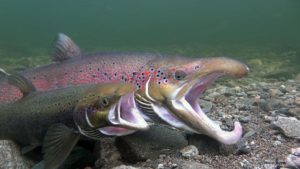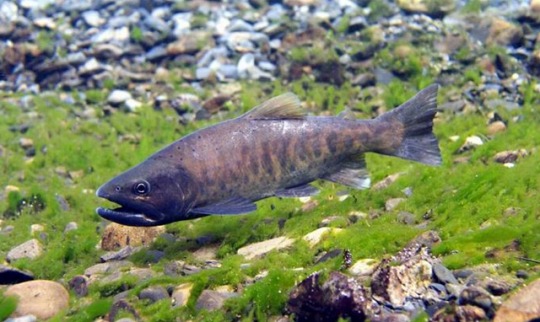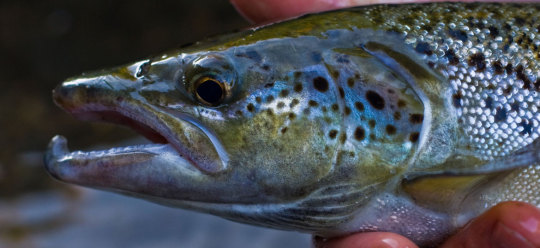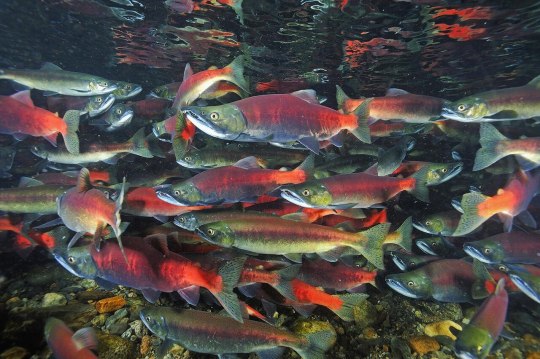#salmon Idaho
Explore tagged Tumblr posts
Text
I just finished my first art project in art class, and we were supposed to do a google doodle except with our names, so it was fun.





#brian jones#art class#music#artsystuff#green#yellow#trippy#1960s psychedelia#60s art#john paul jones#salmon Idaho#houses of the holy#dancing days#my art#sorry I couldn’t resist not editing the photos
24 notes
·
View notes
Text

The River Cinema, Salmon, Idaho, 2024.
#urban landscape#signs#marquee#movies#salmon#lemhi county#idaho#2024#photographers on tumblr#pnw#pacific northwest
13 notes
·
View notes
Text

Salmon river near Salmmon, Idaho, 2024.
0 notes
Text
Why Hells Canyon is Best Experienced in a Jet Boat
Did you know Hells Canyon is the deepest canyon in North America? At some points, its depth is more than 8,000 feet. That’s more than half the height of the Empire State Building!
The best way to explore this natural wonder is with a jet boat tour. There are so many benefits to exploring the canyon in this way.
If you’re looking for reasons to go to Hells Canyon, read on. We’ve put together this article to explain why a jet boat tour is the best way to see it.
It’s a Great Way to Stay Cool
It may not be as hot as the fires of the netherworld, but Hells Canyon can get pretty humid at times. Hiking the trails beside the canyon can be pretty punishing and on a hot day, you might find yourself struggling to keep cool.
When you’re on a jet boat, there’s no need to worry about the heat. You’ll feel the spray jumping up onto your face, providing the perfect antidote to the hot sun.
On the other hand, we’ll ensure you stay warm if you’re traveling in the colder months. Our boats are equipped with curtains and heaters during the winter.
It’s Super Convenient
A jet boat ride through Hells Canyon isn’t just a lot of fun. It’s also the most convenient way to travel through the area.
The terrain around the canyon is pretty unforgiving with few access points for travelers, especially around Hells Canyon dam. The rough nature of the water means boating and rafting can be somewhat difficult. The control and maneuverability of a jet boat make it by far the best way to negotiate this tough canyon.
If you’re planning on staying a night or two, a boat is by far the most convenient way to get around.
You’ll Get Up Close and Personal With Local Wildlife
Hells Canyon is packed full of amazing wildlife. There are hundreds of species, ranging from birds to amphibians around the dam. If you’re keen to get up close and personal with all kinds of creatures, riding a jetboat offers you an excellent chance to do just that.
Bass, steelhead, chinook salmon, and many more species of fish can be seen in the pristine waters of the canyon. When you’re zooming through on a jet boat, you’ll benefit from clear sightings of many of the local aquatic species as well as birds flying overhead and mammals like elk and goats by the banks.
When you book a tour with us, you’ll also see plenty of wildlife on the way to the starting point. We offer a convenient shuttle bus from our base in Pittsburgh, offering you an excellent chance to observe local scenery and wildlife.
Book a Jet Boat Ride On Hells Canyon Today
These are just a few of the many benefits of taking a jet boat ride through Hells Canyon. The best way to discover all of them is to book a ride for yourself.
We’ve got the experience to ensure you enjoy a fantastic experience on your ride through the canyon. Contact us to book a tour today!

0 notes
Text

0 notes
Text

1 note
·
View note
Text

Deep rivers run quiet.
Haruki Murakami
Image: Salmon River, Idaho, US. Charles Gurche.
683 notes
·
View notes
Text
https://ictnews.org/news/us-promises-240m-to-improve-fish-hatcheries-protect-tribal-rights

The U.S. government will invest $240 million in salmon and steelhead hatcheries in the Pacific Northwest to boost declining fish populations and support the treaty-protected fishing rights of Native American tribes, officials announced Thursday.
The departments of Commerce and the Interior said there will be an initial $54 million for hatchery maintenance and modernization made available to 27 tribes in the region, which includes Oregon, Washington, Idaho and Alaska.
#indigenous#native american#tribal rights#respect water treaties with first nations#honor the treaties#usa#usa news#usa pol#us news#good news#nature#environmentalism#environment#science#animals#fish#fisheries
413 notes
·
View notes
Text
Fish of the Day
Today's fish of the day is a bit different from normal, instead of focusing on a particular species of genus we will be focusing on landlocked salmon today by special request of Topi!

(Atlantic Salmon)
Landlocked salmon are notable due to the inherent nature of the salmon life cycle, where salmon hatch in a freshwater stream, migrate to the ocean until they achieve sexual maturity, and then travel back to the same stream they hatched from. However, landlocked salmon are unable to migrate and spend their life cycles entirely in freshwater. The three main landlocked salmon would be The Kokanee salmon (Oncorhynchus nerka), which are a subspecies of sockeye salmon, the Formosan landlocked salmon (Oncorhynchus masou formosanus), which is a subspecies of masu salmon, and finally the several populations of landlocked Atlantic salmon (Salmo salar).

(Formosan landlocked salmon)
Landlocked salmon hold almost no differences to their sea run relatives, other than that which speciation provides. Almost always landlocked salmon are far smaller. Considering that salmon are mid level carnivores, whose diet shifts based on age, freshwater prey is just simply less available than marine prey is. Salmon fry survive off of zooplankton, which is available in large amounts in freshwater, but as they grow into juveniles who eat worms and larvae, but by the time they are of age to transition to the marine environment, they rely on larger prey, such as other fish or squid. This is why landlocked salmon are far smaller, and often considered a far blander flavor by fishers.

(Atlantic salmon)
Another difference between the anadromous (migratory) fish and the non migratory is based on the migration pathways themselves. Landlocked salmon species tend to spend their lives within lakes, as they tend to offer more large prey than rivers do, and when after reaching the end of their lifecycle, these fish tend to run rivers connected to lakes, searching for the same stream they were born in. Those salmon of which were transported or by some means found themselves the first generation of landlocked salmon tend to search only for a safe area, other salmon, and higher elevations during their migration. Of those salmon landlocked only in lakes with no connection to other bodies of water there is significant inbreeding, and disease often tends to kill these populations out. It is thought that salmon of which are acclimated to freshwater and intentionally landlocked have a higher chance of surviving after spawning season, as some salmon species possess the ability to survive the spawning, and return to the ocean for another year. This is something that is not fully understood, and currently being researched by many of the fish hatcheries along the Columbia river, major rivers in California, and along the Atlantic. We may understand the relation between the stresses of moving from saltwater to freshwater better in the future!

(kokanee salmon)
To focus on the landlocked variations of Atlantic salmon for a moment, these are individual populations caught in the many lakes or river systems along the Eastern coast of the United States and Canada. These fish in particular are known as some of the best for fishing in the areas they live in. These fish can be found in a range from the Atlantic coast all the way as Western as Lake Eerie in some cases, living in cold water conditions, with growth being the highest at temperatures of 67-77 degrees fahrenheit, and a diet that is mostly made up of insects and small fish, often cannibalizing other young landlocked salmon.

(Atlantic landlocked Salmon)
The kokanee salmon is found along the Pacific coast, in many different lakes from Alaska to California, and as far East as Idaho, and in some rare cases, Nevada. There are also populations within lakes in Japan and Russia, although there is debate on the subject of speciation for these populations. Although some populations of kaknee have been intentionally introduced across lakes and freshwater systems much further East in the United States. Thes fish can get as large as 8-20 inches, and have a handful of morphological differences between them and sockeyes. Kokanee have a higher number of gill rakers, smaller egg size, and a higher efficiency rate in taking in red coloring from food sources to distribute in their eggs. They can live a lifespan around 4 years before spawning and passing away, as these fish do not survive after breeding, and can not interbreed with sockeye salmon.

(kokanee salmon)
The Formosan landlocked salmon, also called the Cherry salmon, is found in Taiwan. Living in the Lishan mountain range, these fish survive in cold water at extremely high altitudes, with an upper temperature limit of 60 degrees. These fish are thought to have become landlocked by the warming of the Dajia River during the last ice age. They live along the many small creeks and backwater streams, with an extremely endangered population with only around 4,000 living at any given time. Cherry salmon are exceptionally small, reaching only 30cm (around a foot) with most around only 6 inches in their adult life. Subsisting off of bugs and small terrestrial life that gets close to the water. These fish survive only around 4 to 5 years before breeding in higher colder waters, and passing away for their fry to replace them.

(Formosan landlocked salmon)
Those are the landlocked Salmon everybody! Have a wonderful day
#fish#fish of the day#fishblr#fishposting#aquatic biology#marine biology#freshwater#freshwater fish#animal facts#animal#animals#fishes#informative#education#aquatic#aquatic life#nature#river#ocean#salmon#landlocked#Formosan landlocked salmon#kokanee salmon#Atlantic salmon#sockeye salmon
85 notes
·
View notes
Text
Excerpt from this story from the Associated Press (AP):
The U.S. government on Tuesday acknowledged, for the first time, the harmful role it has played over the past century in building and operating dams in the Pacific Northwest — dams that devastated Native American tribes by inundating their villages and decimating salmon runs while bringing electricity, irrigation and jobs to nearby communities.
In a new report, the Biden administration said those cultural, spiritual and economic detriments continue to pain the tribes, which consider salmon part of their cultural and spiritual identity, as well as a crucial food source.
The government downplayed or accepted the well-known risk to the fish in its drive for industrial development, converting the wealth of the tribes into the wealth of non-Native people, according to the report.
“The government afforded little, if any, consideration to the devastation the dams would bring to Tribal communities, including to their cultures, sacred sites, economies, and homes,” the report said.
It added: “Despite decades of efforts and an enormous amount of funding attempting to mitigate these impacts, salmon stocks remain threatened or endangered and continued operation of the dams perpetuates the myriad adverse effects.”
The Interior Department’s report comes amid a $1 billion effort announced earlier this year to restore the region’s salmon runs before more become extinct — and to better partner with the tribes on the actions necessary to make that happen.
That includes increasing the production and storage of renewable energy to replace hydropower generation that would be lost if four dams on the lower Snake River are ever breached. Tribes, conservationists and even federal scientists say that would be the best hope for recovering the salmon, providing the fish with access to hundreds of miles of pristine habitat and spawning grounds in Idaho.
150 notes
·
View notes
Text

Experience the wild beauty of the Salmon River in Idaho, 🇺🇸. Known as the 'River of No Return,' this majestic waterway winds through rugged canyons and dense forests, offering thrilling rapids and breathtaking scenery. A true adventure for outdoor enthusiasts and nature lovers!
59 notes
·
View notes
Text

It’s October 1st, and y’all know what time it is! I’ll be bringing you thirty one fascinating ladies from history, from the legendary to the obscure, and we’ll be starting off, as always with a pen and ink drawing of a woman whose story has fascinating me since childhood - this year, Sacajawea!
Sacajawea (note: there are multiple anglicizations of her name; I went with the one preferred by the Lemhi Shoshone) was born in modern-day Idaho. Her people, the Lemhi Shoshone, or Akaitikka, lived and fished along the Lemhi and Salmon rivers. As a child, however, Sacajawea was kidnapped and enslaved by raiding Hidatsa, who soon sold her to a French-Canadian trader and trapper, Toussaint Charbonneau.
Forced into marriage and taken further and further from home, Sacajawea was soon pregnant. When Charbonneau was hired as a guide for a small expedition of Americans, she had no choice but to follow.
Sacajawea, however, would turn out to be far more vital to the success of the Lewis and Clark expedition than her vainglorious husband. She interpreted for them, served as a diplomat, and rescued critical papers and supplies when a boat overturned and most of the passengers panicked. And, to her great joy, she temporarily returned to her people, reuniting with her elder brother, now the Lemhi chief.
After the expedition, Sacajawea continued to accompany her husband as he moved around the West, but it’s here that she begins to fade from recorded history. It’s known that her son, Jean-Baptiste, was adopted by William Clark, and that she had a daughter, Lizette, who likely died young, but there are two women, otherwise nameless, who historians and oral tradition has claimed as Sacajawea. The first was a wife of Charbonneau, who died of fever in 1812, the year before Clark adopted Jean-Baptiste. Modern historians generally agree that this was Sacajawea, not yet thirty, and there is a monument to her in South Dakota.
But Sacajawea has another marked grave - that of the “female chief,” or Porivo, a Shoshone woman who had lived among the Comanche, travelled with white men, and died of old age among the Lemhi Shoshone. While her story has been subsumed by Sacajawea, it seems that she was quite the Awesome Lady of History herself.
#sacajawea#sacagawea#indigenous history#american history#shoshone history#awesome ladies of history#October 2024#my art#pen and ink#slavery tw
14 notes
·
View notes
Note
Can we have more mermaid states please
I spent MINUTES researching all these and trying to make them different, so all mermaids are final, no refunds
Alabama = Southern Redbelly Dace Alaska = Orca Arizona = Apache Trout Arkansas = Smallmouth Bass California = Bee Colorado = Greenback Cutthroat Trout Connecticut = American Shad Delaware = Weakfish Florida = Lemon Shark Georgia = Largemouth Bass Hawaii = Reef Triggerfish Idaho = Blue Trout Illinois = Blue Gill Indiana = Orangespotted Sunfish Iowa = Channel Catfish Kansas = Green Sunfish Kentucky = Spotted Bass Louisiana = Speckled Trout Maine = Maine Lobster Maryland = Chesapeake Blue Crab Massachusetts = Atlantic Blue Marlin Michigan = Salmon Minnesota = Walleye Mississippi = Crappies Missouri = Lake Sturgeon Montana = Cutthroat Trout Nebraska = Rainbow Trout Nevada = Lahontan Cutthroat Trout New Hampshire = American Eel New Jersey = Brook Trout New Mexico = Panfish New York = Golden Shiner North Carolina = Carolina Madtom North Dakota = Northern Pike Ohio = Saugeye Oklahoma = White Bass Oregon = Chinook Salmon Pennsylvania = Stocked Rainbow Trout Rhode Island = Brown Bullhead South Carolina = Striped Bass South Dakota = Shortnose Gar Tennessee = Pallid Sturgoen Texas = Guadalupe Bass Utah = Bonneville Cutthroat Trout Vermont = Mottled Sculpin Virginia = Cobia Washington = Sock Eye West Virginia = Candy Darter Wisconsin = Muskellunge Wyoming = Lake Trout
19 notes
·
View notes
Text

Mothman wanted to get back to nature (and I wanted a break from drawing complex architecture lmao) so he and his friend Bigfoot went salmon-watching at Dagger Falls, Idaho!
45 notes
·
View notes

